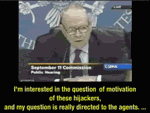Actually Israel's violation of international law in attacking Iraq's Osirak reactor increased the threat. The Osirak reactor was not being used to persue nuclear weapons but AFTER the agression Israel's attack, such weapons were pursued: "Israel's strike, far from foreclosing Iraq's nuclear career, gained Iraq support from some other Arab states to pursue it."
"The Osirak reactor was unsuitable for the production of plutonium, though after the Israeli bombing in 1981, Iraq took the "solid decision to go full speed ahead with weaponization. Prior to that attack, Osirak had regularly been inspected, and the IAEA saw no evidence of any attempt to construct a nuclear weapons programme."
"In 1981, when Israel attacked Iraq's Osirak reactor, Tel Aviv's move caused Baghdad to accelerate its quest for nuclear arms. By demonstrating Iraq's military weakness in its failure to prevent an Israeli air strike, Tel Aviv's decision merely caused the leadership in Baghdad to believe even more strongly that they needed nuclear weapons to shield against future aggression from hostile states. By acquiring nuclear arms, states are able to increase their defense capabilities since other states are hesitant to take military action against a nuclear-armed rival. As Khadduri writes in his recent book describing Iraq's nuclear research program, after Israel attacked the Osirak reactor, "Saddam took the political decision to initiate a full-fledged weapons program immediately afterwards."


















1 comment:
Israel could potentially have produced a few dozen nuclear warheads in the period 1970-1980, and is thought to have produced sufficient fissile material to build 100 to 200 warheads by the mid-1990s. In 1986 descriptions and photographs of Israeli nuclear warheads were published in the London Sunday Times of a purported underground bomb factory at the Dimona nuclear reactor. The photographs were taken by Mordechai Vanunu, a dismissed Israeli nuclear technician. His information led some experts to conclude that Israel had a stockpile of 100 to 200 nuclear devices at that time.
Post a Comment